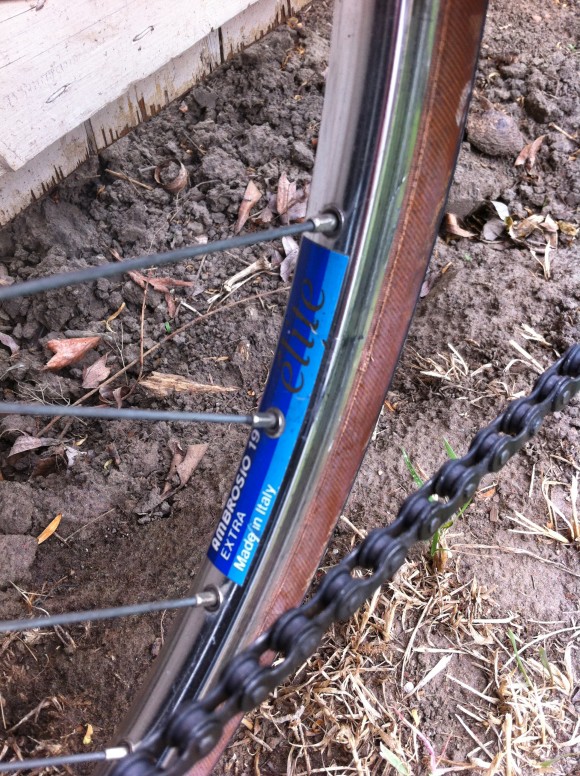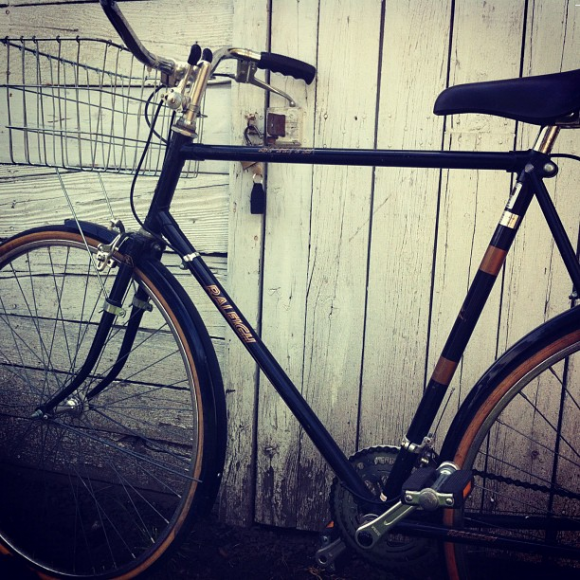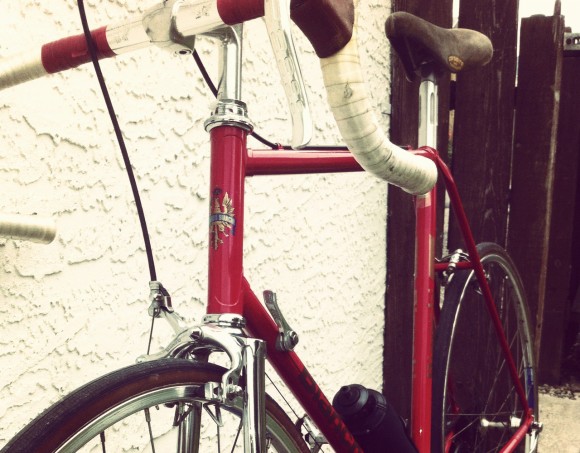 This weekend I became the owner of this 1982 Bianchi. As soon as I saw it I knew it needed the right home. I have not determined the exact model yet. However, I have a suspicion that it might have been either a custom build, do to the fact that it’s forks are chrome, or a Bianchi Sport SS. From all my research it appears that stock Bianchi forks would have probably been the same color of the bike.
This weekend I became the owner of this 1982 Bianchi. As soon as I saw it I knew it needed the right home. I have not determined the exact model yet. However, I have a suspicion that it might have been either a custom build, do to the fact that it’s forks are chrome, or a Bianchi Sport SS. From all my research it appears that stock Bianchi forks would have probably been the same color of the bike.
It has full Shimano Golden Arrow components, the predecessor to the Shimano 105 components. These components were available from 1983-86, but Bianchi released them with their 1982 Sport SS Road Bikes. So it’s very possible that this bike is a Bianchi Sport SS. One thing that is confusing is the “Red Ferrari” color. It was a limited color, which is one of the other reasons I believe it might have been a custom order at the time.
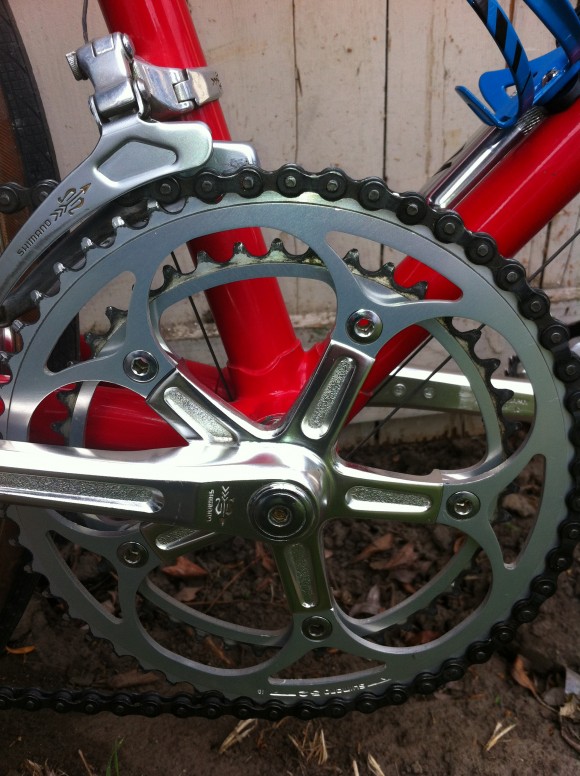
The frame is an Ishiwata Magny frame (Manganese-molybdenum alloy double butted tubing). A really good frame from Japan. There is a lot of discussion on the Ishiwata Magny frames, but the overall consensus is that it is a very well made frame and is becoming a more collectible item. According to Sheldon Brow, “While Bianchi is best known as an Italian brand, it was having bicycles built in Japan to its specifications for several years in the late 1980s. These were particularly nice bikes, with better workmanship than the Italian models.”
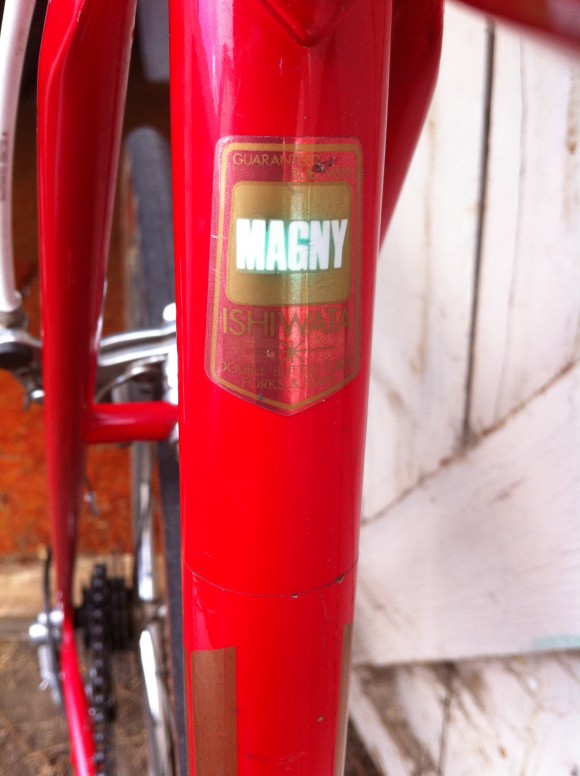
Visually, it is a beautiful bike and rides very well. I have taken it out on some nice rides since getting it and I am shocked at how well it feels. For being 30 years old the frame and components feel amazing. It shifts really nicely and it feels light pedalling up hills. I have an early 1980s Benotto which I am restoring and the Bianchi’s frame geometry looks almost identical. Which is another confusing matter. The Benotto frame is highly regarded for its geometry.
Right now I am really enjoying this beautiful bike. If you know anything more about this bike, or if this page helped you identify yours, I would love to hear it.
I replaced the bar tape with some nice comfy yellow Specialized tape. I am looking for some brake hoods to replace these, but in the meantime, electrical tape holds them together nicely.
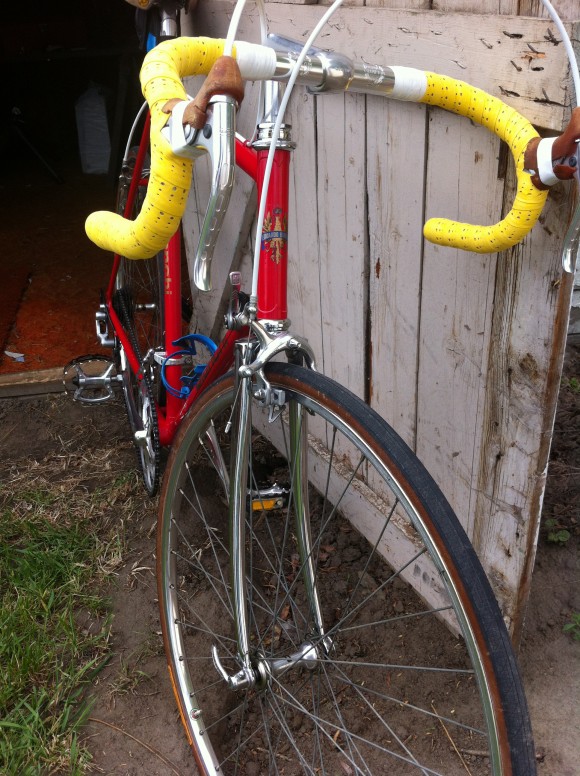
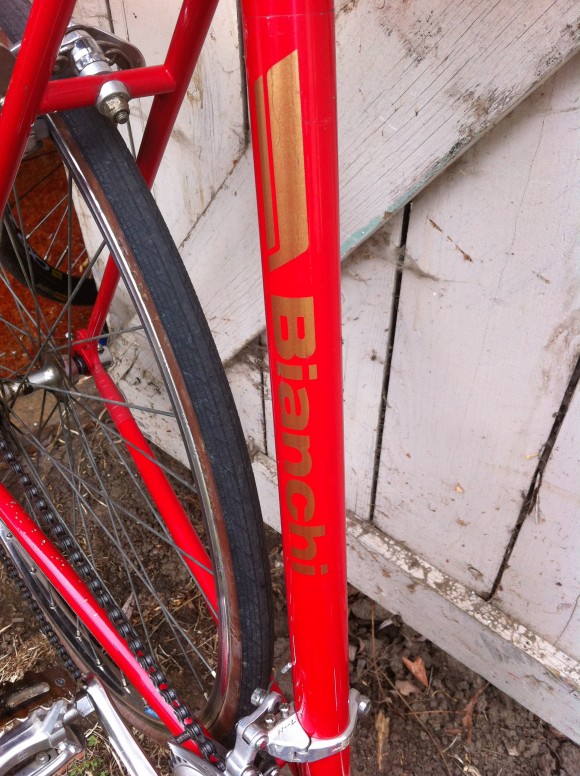
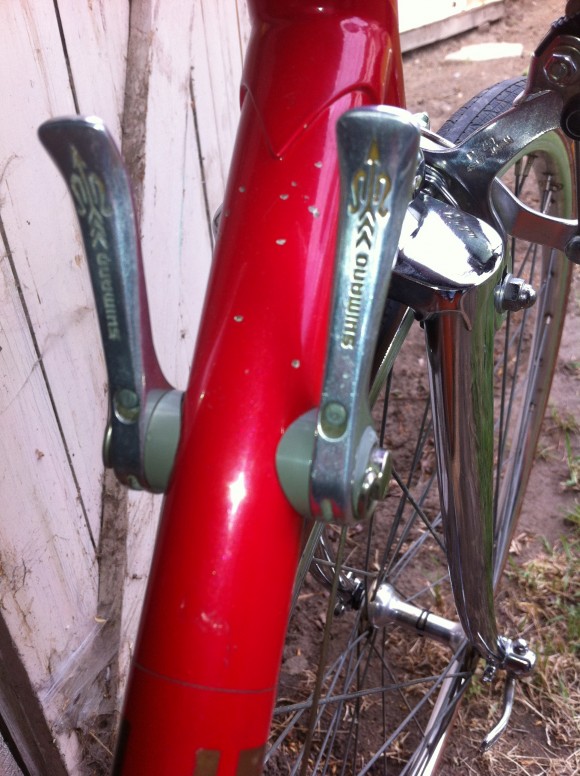
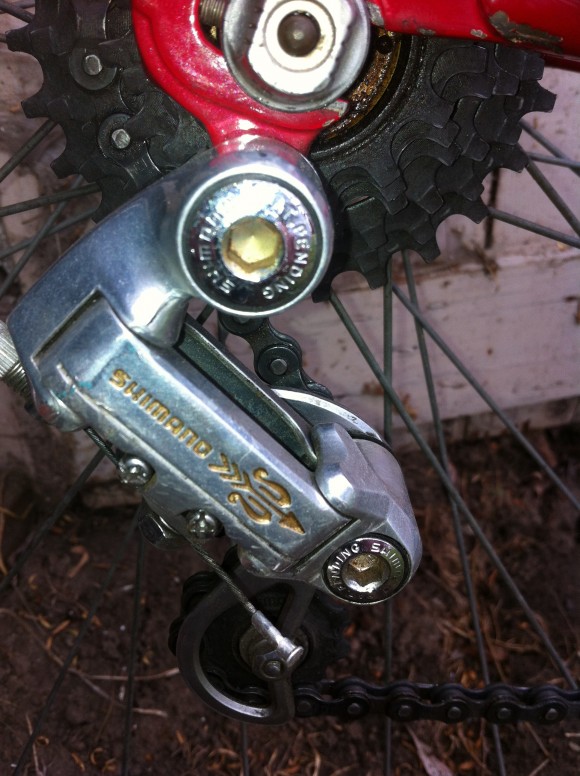

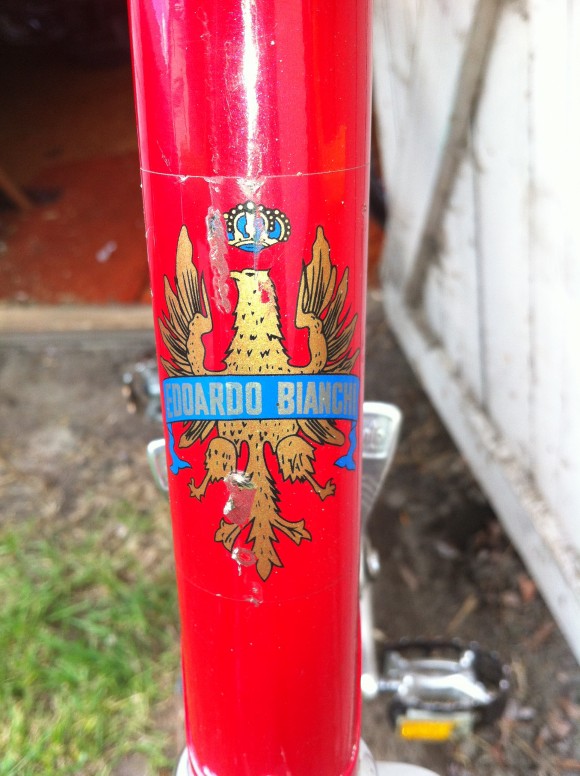
Nice Shimano brakes.
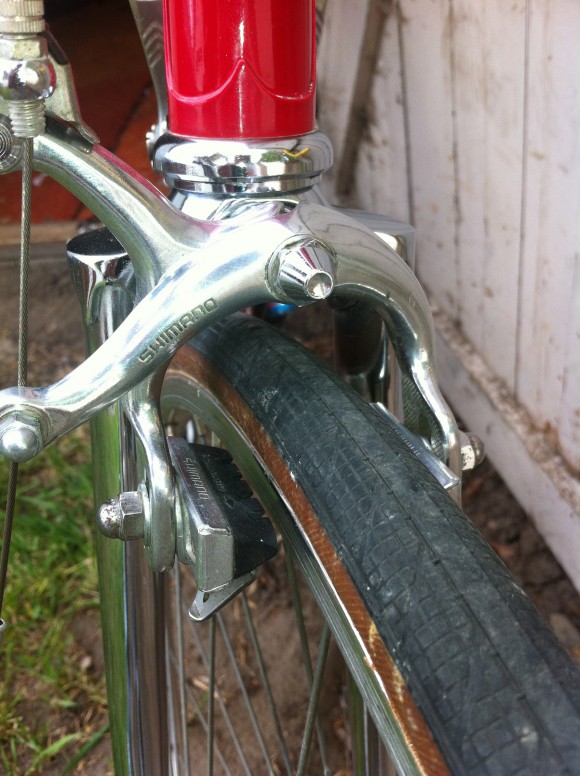
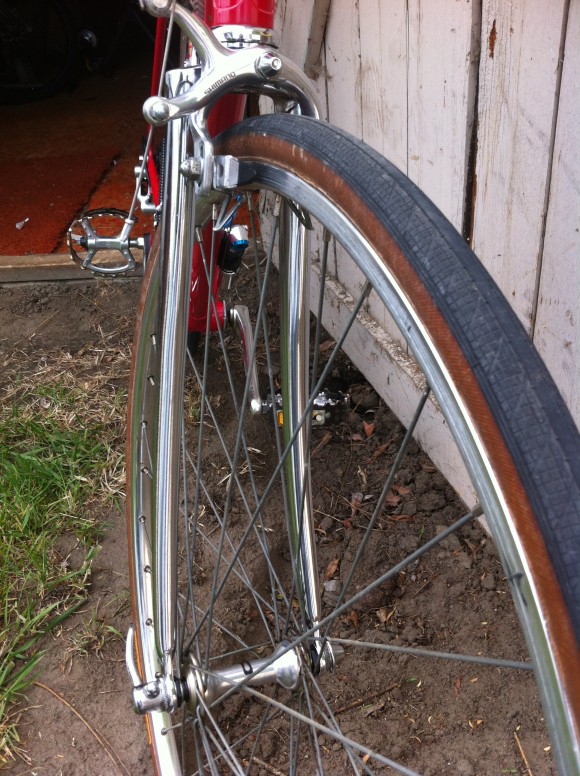
Ambrossio 19 Extra rims. I really like these rims. I have a set of Mavic’s too, but I prefer these. 